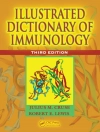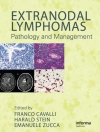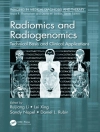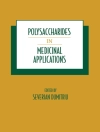This book provides a comprehensive review of the challenges, risk stratification, approaches and techniques needed to improve pain control in ambulatory surgery centers (ASCs). It addresses not only the management of acute perioperative pain but also describes modalities that could potentially reduce the risk of evolution of acute pain into chronic pain, in addition to weaning protocols and follow ups with primary surgical specialties and pain physicians as needed.
Organized into five sections, the book begins with the foundations of managing ASCs, with specific attention paid to the current opioid epidemic and U.S. policies relating to prescribing opioids to patients. Section two and three then explore facets of multimodal analgesia and non-operating room locations, including the use of ultrasounds, sedation in specific procedures, regional anesthesia, ketamine infusions, and the management of perioperative nausea and intractable pain in outpatient surgery. Section four examines the unique challenges physicians face with certain patient demographics, such as the pediatric population, those suffering from sleep apnea, and those with a history of substance abuse. The book closes with information on discharge considerations, ambulatory surgery protocols, recovery room protocols, and mandatory pain management services.
An invaluable reference for all health personnel and allied specialties, Pain Control in Ambulatory Surgery Centers (ASCs) meets the unmet need for a resource that covers optimum pain control in patients undergoing outpatient surgery as well as the urgent ASCs challenges that are presented on an immense scale with national and international impact.
Daftar Isi
Academic and Non-academic Ambulatory Surgery Centers and Hospital Outpatient Departments.- Opioid Epidemic.- Current US Policy for Opioid Prescribing.- Rationale and Goals for Optimal Pain Control in ASCs.- Challenges of Pain Control in Ambulatory Surgery Setting.- Assessment and Optimization of Available Resources for Pain Control.- Benefits of optimum pain control in ASCs.- Structuring Pain Control Regimens in ASCs.- Preoperative Planning.- Comprehensive Pain Management: Opioid Naïve Vs Opioid Tolerant.- Risks and Benefits of Opioids in Chronic/Cancer Pain.- Maximization of non-opioid multimodal therapy in ASCs.- Use of Ultrasound in an Ambulatory Setting.- Use of Regional anesthesia/Neuraxial anesthesia in ASCs.- Ketamine infusions.- Management of Perioperative Nausea and Intractable Pain in Outpatient Surgery.- Sedation for Interventional Pain Procedures.- Sedation and Analgesia for GI Procedures.- Management of Perioperative Pain for IR Procedures.- Management of Perioperative Pain for Bronchoscopy.- Perioperative management of obstructive sleep apnea patients in an ambulatory setting.- Special Considerations – Management of Pediatric Pain in an Ambulatory Setting.- Pain management in former addicts on MAT (Medication assisted treatment).- Special Considerations – Medical Marijuana and Active Substance Abuse.- Special Considerations – Indwelling Intrathecal Pumps and Spinal Cord Stimulators.- Discharge from Recovery Room in Ambulatory Surgery Centers.- Recovery Room Protocols for nursing in ASCs and HOPDs.- Weaning protocols for Ambulatory Surgery.- Role of a Focused Ambulatory Pain Specialist.- Inclusion of mandatory pain management services in ASCs.- New Vistas: Opioid Sparing Multimodal Therapy in the Post-Operative Period.
Tentang Penulis
Kanishka Rajput
Department of Anesthesiology Division of Pain Medicine
Yale University School of Medicine
New Haven, CT
Nalini Vadivelu
Department of Anesthesiology
Division of Ambulatory Surgery
Yale University School of Medicine, New Haven, CT
Alan David Kaye
Louisiana State University Health Sciences Center
Shreveport, LA
Rinoo Vasant Shah
Louisiana State University Health Sciences Center School of Medicine
Shreveport, LA












